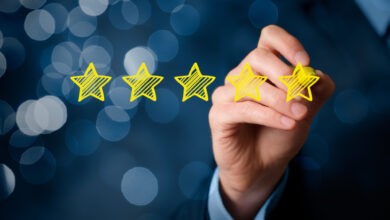Did you know that at one point a single Bitcoin was worth $68,000?
Bitcoin is the original cryptocurrency, the one that began the crypto revolution. It promised an anonymous, decentralized, and secure payment system to replace fiat currency–and it delivered. But as it continues to sink lower and lower in price, what is the future of Bitcoin?
The crypto sphere is one that is in constant flux. New coins arise, and old coins fall. The methods for mining coin change, as do the proofs used to verify them.
It’s a lot to process, so in this guide, we’ll discuss where Bitcoin could be headed in the near future.
The Current State of Bitcoin
Make no mistake, Bitcoin continues to be the king of cryptocurrency. Ask someone to name a cryptocurrency, and that will be the first word out of their mouth. Other contenders like Ethereum and Cardano simply do not have the same weight and reputation.
Bitcoin has been around since 2008. Its anonymous creator, Satoshi Nakamoto, developed the concept of the blockchain to introduce the idea of decentralized currency. Since then, Bitcoin has only grown in popularity.
The Benefits of Bitcoin
Look anywhere that supports or discusses cryptocurrency, and you’ll see Bitcoin. You can take it out at ATMs (learn more about that here) and use it at some convenience stores. The stigma of Bitcoin only being a criminal currency is fading away.
Bitcoin allows you to make purchases without the oversight of banks or governments. It’s money you can access anywhere, at any time, even when payment systems are down. You can store the money offline, or sell it off as you please as prices go up.
The prevalence of cryptocurrency in recent years has surged. Thanks to the explosion of interest in NFTs, people are fascinated by the concept of blockchain technology.
Bitcoin has opened the door for new technologies, too. There is the possibility for autonomous, decentralized corporations. The possibility for unique art and contracts that fulfill themselves.
Investing in Bitcoin
Now, millions across the world trade Bitcoin on a daily basis. It is the most valuable speculative currency. Investors the world over pledge that any budding investor can and should put their money into Bitcoin.
Bitcoin is easy to invest in. You just find an exchange, make a wallet, and then purchase the coin. It’s up to you to learn how to deal with price fluctuations to make informed decisions when you trade.
The point is, Bitcoin is huge, and it will remain huge for some time to come. Let’s discuss some of the reasons why Bitcoin will keep this staying power.
Where is Bitcoin Headed?
Bitcoin doesn’t just have the advantage of being the first cryptocurrency. It doesn’t even have the advantage of using the most efficient mining proof. But it does have a leg up over the competition.
The future of Bitcoin is bright. It is likely to remain the crypto king for the following reasons.
Bitcoin Has Strong Implementation
As with any new technology, it takes time for developers to make it commonplace. You have to develop the technology to make it work in society. This means payment systems, exchanges, and more.
For a long time, you could only use Bitcoin on questionable websites like Silkroad. While Bitcoin had the promise, no one trusted it for common transactions. It took a long time before any payment processors or reputable organizations would touch it.
But patience has paid off, and Bitcoin now works in ATMs, online stores, brick-and-mortar stores, and more. You can’t use Bitcoin to buy groceries or get takeout, but one can’t deny that it’s made a lot of progress. The fact that you can buy anything legitimate with Bitcoin only proves that there’s a lot of promise for cryptocurrency.
Because Bitcoin was first in the door, it has remained there. Check any site that accepts cryptocurrency, and they tend to only accept the big ones. Bitcoin is always number one on the list.
Until another cryptocurrency–or several–and beat it out of that position, Bitcoin will remain.
Bitcoin Mining Has a Long Way to Go
One of the central features of Bitcoin–and other cryptocurrencies–is that there’s a finite amount. The creator of Bitcoin said that Bitcoins are created at a constant rate, similar to how gold is mined from the earth. However, gold is not unlimited, and so is Bitcoin.
Fortunately, there is a lot of “gold” left to mine. Bitcoin miners will continue to extract this digital currency until 2140. That gives the market ample time to build infrastructure, and incentivize updating the ledger via transaction fees.
Bitcoin Price Will Grow Higher and Higher
There are benefits to being a finite currency. Fiat currencies like the dollar just inflate over time.
Of course, there will be dips given that this is a speculative market. Cryptocurrency has a reputation for being volatile.
However, being finite means that value will continue to rise over time. Just take a look at diamonds.
Diamonds are, believe it or not, an abundant resource. But thanks to the diamond market’s artificial restriction, diamond prices continue to remain high. Bitcoin, on the other hand, is truly finite.
Those who invested in Bitcoin in the early days now have thousands and thousands of dollars worth. The same will hold true for those who invest in Bitcoin now and hold it for another dozen years.
By 2140, those who bought Bitcoin now will likely be billionaires. The limited supply of Bitcoin, especially when we can no longer mine it, will make it more valuable than gold or diamonds.
Bitcoin Is the Focus of Infrastructure
Bitcoin mining is a multi-billion dollar industry. Across the world, thousands of miners–big and small–run intensive server farms to update the ledger. These servers race to solve complex equations first, resulting in the reward of a newly-minted Bitcoin.
Mining is a huge operation that requires expensive computers. They used to use high-end graphics cards, but now the trend has shifted to Bitcoin-specific devices. The point is, the industry has only gotten more specialized.
This specialization makes it hard to pivot away and mine other coins, like Ethereum. Ethereum uses a proof of stake mining method, rather than proof of work. That means the requirements aren’t as much about raw computational power.
Proof of work forces miners to be efficient, and discover innovative ways to speed up mining. The energy cost of mining is incredibly high, as is the bandwidth required for the network. These costs are coming down as investors find ways to reduce the computational burden.
All of this is to say that Bitcoin has forced innovation, specifically for itself. The market is oriented towards–and invested in–the success of Bitcoin. It’s unlikely that any other coin will amass the same amount of resources or devotion.
Challenges that the Future Poses to Bitcoin
Bitcoin is not without its criticisms. Other cryptocurrencies are innovating, while Bitcoin has remained more or less the same. It may be the king for the reasons mentioned above, but it does have its weaknesses.
Here are some of the hurdles Bitcoin will have to clear before it can hope to remain relevant.
Price Volatility
Let’s address the elephant in the room: cryptocurrency is incredibly volatile. Prices can fluctuate by hundreds or thousands of dollars in a single day. In some cases, this can happen in only a matter of hours.
Many have tried to implement stablecoins. These are coins that do not experience severe fluctuations, making them viable for people to use for everyday transactions. But these stablecoins have also suffered the same fluctuations.
Some have created coins that are tied to a fiat currency’s value. An example of this is Tether, which is designed to mimic the dollar’s value. But Tether has also run into a ton of problems.
The unfortunate reality is that cryptocurrency, in its current state, will remain volatile. The technology is still developing, and we have yet to find a way to stabilize it. Fiat currencies are the best we can expect for paying employees and bills.
Inefficient Proof of Work
Bitcoin uses proof of work to validate transactions on the blockchain. This means that in order to validate the subsequent block, a miner needs to solve a complex equation. This is the “work” in proof of work.
If the miner puts in the “work,” then they get the reward of a newly-minted Bitcoin. This in and of itself is the entire incentive to run the ledger. Without this incentive, no one would have any reason to keep the ledger updated.
But while miners are all racing to mine Bitcoin, it is inefficient. It’s not just the expensive computer hardware needed to mine the coin, or the IT staff to run these operations. It’s the energy cost.
It takes the same energy one household uses in 13 years to mine a single Bitcoin. That happens every 10 minutes. That means in a single day of Bitcoin mining, we could power a single house for almost 2,000 years.
Needless to say, this is not good. Existing payment systems like Visa require a tiny, tiny fraction of this amount. The future for Bitcoin won’t be so bright if Bitcoin cannot reduce this heavy energy burden.
Maintaining the Ledger and Forks
The design of the ledger is such that everyone has a copy. To avoid double transactions or false transactions, changes must be put up against the ledger copies that everyone else in the world has. This makes it so mistakes or mischievousness never happen.
But from time to time, a big crypto scam results in the loss of a lot of Bitcoin. To return this Bitcoin to the affected users, Bitcoin can do what is known as a fork. This is when they abandon the ledger with transaction discrepancies in favor of a new one.
However, there are a few big problems with this:
- Central authorities can effectively erase transactions they don’t want, giving them unprecedented power
- Forks may be contentious, meaning the larger group gets to choose which changes stay
- A false fork could theoretically happen with a dedicated hacker group and a bot net
Forks are inconvenient, and they always lead to price fluctuations. They make the currency even less stable and bring into question its future potential.
Forks also illustrate one of the flaws with cryptocurrency: the inability to dispute transactions. With a credit card or bank payment, you can charge back a fraudulent payment. This can happen instantly, and all the funds are returned.
But with the blockchain, all payments are final. The only way to perform a refund is to trust that a vendor will send the money back. In other words, a normal transaction.
There are budding technologies that may solve the issue of ledger immutability, but those technologies are not here. Bitcoin will need to adapt if it hopes to stay relevant.
Slow Transactions
Bitcoin runs on a schedule of adding a block every 10 minutes. This block includes all transactions made during those 10 minutes. Once the miners validate the block, all of those transactions become final.
The problem is, this is a long time to validate a transaction. With Visa, a transaction can be nearly instantaneous. But with Bitcoin, you will have to wait a considerable length of time.
In our modern world, this isn’t sufficient. We need fast and reliable transactions. Having to wait so long could seriously impact the way our society functions.
Fortunately, fiat currency isn’t out the door yet. This is the perfect time for Bitcoin to test new technologies–and upgrade the blockchain–so we get a comparable system to Visa. But until that day comes, the future of Bitcoin may not be so bright.
Purchase Bitcoin Today
Bitcoin is the first cryptocurrency and continues to this day to be the greatest. The future of Bitcoin is looking bright, thanks to its increasing value and strong implementation. However, it is not without its challenges, and it’s up to the creators to implement change to ensure its survival.
Follow our blog for more on investing in Bitcoin.




